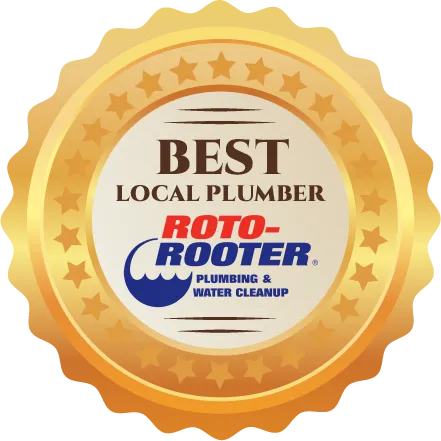Urgent Residential Water Pipe Repair: St George Journey
In St. George, water pipe issues aren’t just an inconvenience; they’re a pressing concern. The city’s rapid growth and shifting clay soils present unique challenges for your home’s plumbing system. Factor in the high humidity and salty air commonly found in the region, and your pipes could be more vulnerable than you think. To address these pressing issues, local repair teams are collaborating closely with city officials, ensuring that your water system remains reliable. From upgrading infrastructure to implementing advanced materials that withstand the local environmental conditions, these efforts are designed to safeguard St. George’s water supply for the future.
The Growing Need for Pipe Repairs in St George
As St George continues to expand, the demand for residential pipe repairs is on the rise. You might notice more construction and new homes popping up, particularly in areas like Little Valley and Desert Canyons, which means the infrastructure supporting these neighborhoods is under constant stress.
Older neighborhoods, such as Bloomington and Dixie Downs, experience wear and tear on their pipes, leading to increased repair needs. With more people moving in, especially during the snowbird season, water usage spikes, putting pressure on existing systems.
You can’t ignore the significance of timely pipe maintenance. In St George, the unique clay soils can exacerbate shifting and settling, impacting underground pipes. Delaying repairs can lead to costly damage and disruption to your home life.
It’s essential to have a local plumber you can trust, who understands the specific challenges of St George’s infrastructure. They’re equipped to handle the growing demands of the area, from the red rock terrain to the flash flood risks.
Being proactive guarantees your home’s water systems remain efficient and trouble-free, ensuring peace of mind in the heart of Southern Utah.
Identifying Common Water Pipe Issues
When addressing residential water pipe repairs in Southern Utah, it’s essential to be aware of specific challenges that can arise in this arid, high desert region.
The dry climate and high mineral content in local water can accelerate scale buildup and corrosion, leading to leaks that waste water and potentially cause structural damage if not promptly addressed.
In areas with older homes, such as historic neighborhoods in St. George, cracks in pipes are common. Over time, mineral-rich water and temperature fluctuations can worsen these issues, causing pipes to deteriorate faster than usual.
During the winter months, sudden cold snaps—even in typically warm areas like Washington County—can cause pipes to burst, especially if they aren’t adequately insulated.
Clogs are also a frequent issue, often resulting from sediment, hard water deposits, and windblown sand, which can slow water flow or completely block it.
Moreover, joint problems may occur due to the shifting, sandy soil common in Southern Utah, leading to misalignments, leaks, or pipe breaks.
The Role of Local Repair Teams
Local repair teams are indispensable in maintaining the integrity of residential water systems, especially in high desert regions like St. George, Utah. Their expertise and quick response times are crucial when addressing unpredictable issues, such as mineral buildup from hard water, pipe corrosion, or the stress that temperature swings place on plumbing systems.
These teams possess invaluable local knowledge, understanding the unique challenges faced by homes in arid climates with shifting soils and limited water resources. They’re trained to manage emergencies—from burst pipes during cold snaps to minor leaks caused by aging infrastructure—ensuring your home doesn’t suffer further damage.
When you call a local team in St. George, you’re not just receiving repair services; you’re benefiting from their commitment to the Washington County community’s well-being. They prioritize your needs, often offering personalized solutions tailored to the specific environmental and infrastructural challenges of Southern Utah.
Challenges Faced by Homeowners
Homeowners in high-desert regions such as St. George, Utah, often encounter distinct plumbing challenges due to their environment. In this area, hard water with high mineral content is a significant concern, as it accelerates the buildup of scale and corrosion inside metal pipes, making them more prone to leaks and reduced flow.
St. George is also known for its shifting, sandy soil conditions, which can disrupt underground pipes and lead to unexpected water damage that requires immediate attention.
Moreover, while the region has low humidity, plumbing fixtures in poorly ventilated areas can still foster mold or mildew growth, especially if small leaks are left undetected—posing potential health concerns for residents.
Fluctuating water pressure is another common issue in Southern Utah, which can complicate everyday tasks like showering or washing dishes and strain the plumbing system over time.
The extreme seasonal temperature swings in St. George—hot summers and occasional winter cold snaps—can cause pipes to expand and contract, adding extra stress and increasing the risk of cracks or bursts.
If not addressed promptly, these issues can escalate, transforming minor repairs into expensive, urgent projects that significantly disrupt daily life.
Innovative Solutions and Technologies
In the heart of the bustling city, where aging infrastructure poses unique challenges, cutting-edge detection tools are revolutionizing leak management.
These tools offer incredible accuracy, essential for navigating the complex network of pipes beneath the city’s streets, ultimately saving residents time and money.
In this urban environment, eco-friendly pipe materials aren’t just an environmental boon; they’re crucial for extending the lifespan of plumbing systems subjected to heavy use and wear.
Embrace advanced repair techniques that promise quicker and more efficient solutions specifically designed for the challenges of urban water pipe issues.
Cutting-Edge Detection Tools
In the arid regions of the southwestern United States, where water conservation is crucial, cutting-edge detection tools have transformed the field of residential water pipe repair. In these areas, the scarcity of water makes detecting and fixing leaks a top priority.
Advanced technologies such as acoustic sensors and infrared cameras are particularly beneficial. They allow residents to efficiently identify and address leaks without resorting to extensive and potentially harmful excavation in their drought-prone landscapes.
Acoustic sensors are adept at picking up the subtle sounds of water escaping pipes, making it possible to locate leaks with precision beneath the often hard and dry soil. In contrast, infrared cameras can detect temperature variations, highlighting areas of moisture or leaks that are otherwise invisible, even in the extreme heat of the desert environment.
Moreover, smart home water monitoring systems offer real-time updates on water usage, which is vital in these regions where every drop counts. These systems alert homeowners to potential problems before they escalate, allowing for quick and proactive responses.
Eco-Friendly Pipe Materials
After identifying leaks with cutting-edge detection tools, choosing the right materials for pipe repair is the next logical step.
If you live in areas with significant temperature swings, such as Southern Utah, it’s crucial to opt for materials that can withstand thermal expansion and contraction. PEX (cross-linked polyethylene) pipes are an excellent choice—they’re durable, flexible, and better suited to the high desert climate. PEX also resists corrosion and scale buildup, making it ideal for hard water conditions commonly found in St. George and Washington County.
In older homes throughout historic areas of St. George, copper pipes may be a preferred option. Copper is recyclable, offers natural antibacterial properties, and has a proven track record for long-term reliability. It’s especially valued in Southern Utah, where water conservation and purity are growing concerns.
Plus, copper and PEX pipes don’t release harmful chemicals into the water supply, making them ideal choices for regions like St. George that are committed to sustainability and high water quality standards. By selecting these sustainable materials, you’re taking a vital step toward a greener, more efficient future for your home and community.
Advanced Repair Techniques
In regions with clay-rich soils, like those found in parts of the Southern Utah, traditional repair methods for residential water pipes can be challenging due to soil movement and shifting. Embracing advanced techniques can greatly enhance the efficiency and effectiveness of these repairs. Instead of relying on outdated methods, consider innovative solutions that address these specific challenges.
For areas where soil stability is a concern, it’s important to use minimally invasive methods that reduce excavation and limit disruption to the surrounding landscape. These modern approaches help maintain yard aesthetics while reducing repair time and long-term damage.
In addition, smart leak detection systems are a valuable asset in regions prone to extreme weather fluctuations, such as those experienced in the Southern Utah. These systems utilize sensors to monitor water flow and alert you to potential leaks before they escalate into significant problems—a crucial feature for preventing water damage during harsh winters.
By implementing advanced diagnostic and repair technologies, homeowners can address environmental challenges more efficiently while extending the lifespan of their plumbing systems.
Collaborative Efforts With City Officials
Working collaboratively with city officials in St. George can significantly streamline the process of obtaining repair permits, making water pipe repairs more efficient within the city’s unique infrastructure and growing neighborhoods.
The area’s expanding residential developments and rocky desert terrain present specific challenges that require careful planning and coordination. Clear communication with residents is crucial to minimize disruptions and keep everyone informed—especially in communities like Downtown St. George or Little Valley, where neighborhood involvement and public interest are strong.
Streamlining Repair Permits
In the city of St. George, Utah, streamlining the process of obtaining repair permits involves addressing location-specific challenges that can affect efficiency. The city’s rapid growth, combined with its unique high desert terrain and mix of older and newly built neighborhoods, often requires special considerations during repair planning.
To navigate these complexities, it’s crucial to maintain clear and efficient communication with St. George City officials. Establishing a direct line of contact with the City of St. George Building Department can help address issues promptly and avoid unnecessary delays.
Understanding all local permit requirements and guidelines is essential, particularly as St. George continues to update infrastructure standards in response to growth and conservation concerns. Asking for clarification when needed can prevent bottlenecks, and using the city’s online permit portals can significantly accelerate documentation and approval timelines.
Engaging with the local community by attending St. George City Council meetings, where infrastructure and development are frequently discussed, can keep you informed and help foster relationships with key officials.
This collaborative approach improves the overall repair process—benefiting both contractors and the broader community—while respecting St. George’s unique regulatory environment and commitment to sustainable growth.
Communication With Residents
Effective communication with residents in urban areas, such as densely populated neighborhoods or historic districts, is crucial when collaborating with city officials on water pipe repairs. These areas often face unique challenges, such as limited street access or preservation concerns, necessitating tailored communication strategies.
To ensure a smooth process, keep everyone informed through timely updates. Share the repair schedule, potential disruptions, and expected outcomes via emails, community meetings, or flyers. By fostering trust and transparency, and encouraging questions and feedback, you can help alleviate residents’ concerns and ensure their cooperation.
In areas with old infrastructure, for example, repairs may take longer due to the delicacy of the materials, while in newer developments, the complexity might arise from integrating with modern systems.
Coordinate with city officials to provide accurate and consistent information, addressing any complaints or issues quickly. A proactive approach can prevent misunderstandings and build positive relationships.
When residents feel heard and informed, they’re more likely to support the project and offer their patience, making the repair process more efficient and less stressful.
Conclusion
In St. George, addressing water pipe issues is particularly crucial due to the region’s unique challenges, such as the sandy soil and extreme temperature fluctuations that can lead to pipe corrosion and breakage. By staying informed about these local issues and collaborating with St. George’s experienced repair teams, you can navigate these challenges more effectively. Embrace innovative solutions tailored to the area’s needs and work closely with city officials to ensure your home’s water system remains reliable. Don’t wait for minor problems to become costly emergencies; take proactive steps today to safeguard your home and help build a resilient St. George community.
Tags





